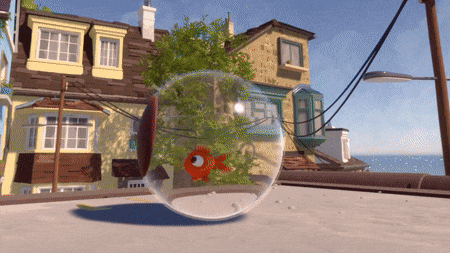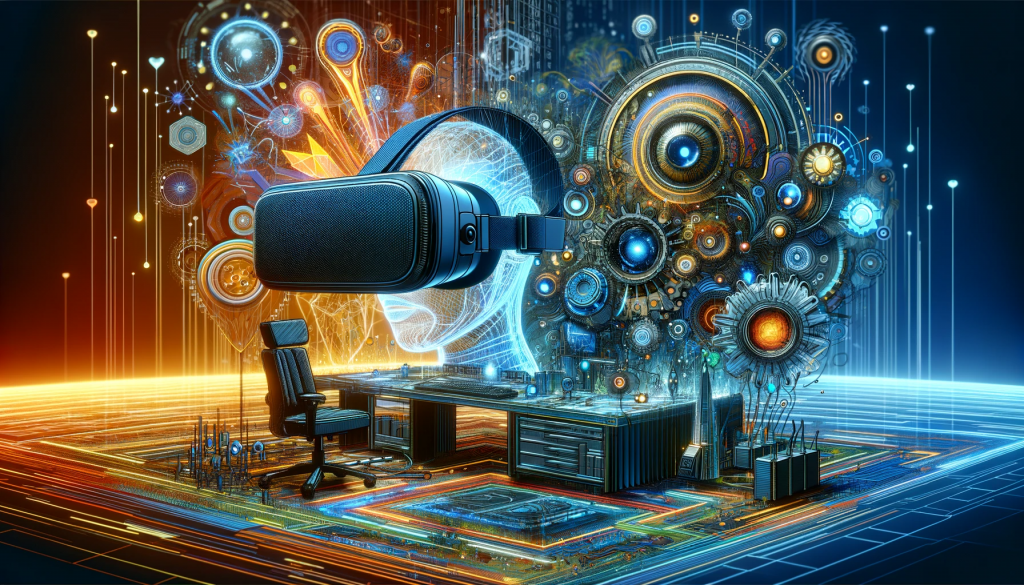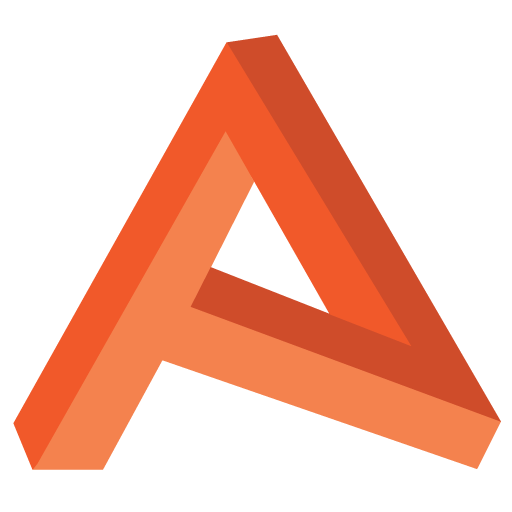What’s Next? – Over A Decade of Tech Art
I’ll soon be approaching my 13th year in the games industry, and 12th as a technical artist. I was fortunate to have this – along with my hard work – recognised with a promotion to Principal Technical Artist a year ago, but as is often the way with promotions, my job hasn’t changed.
What does a “Principal” Technical Artist do?
A good sub-question to “What is a technical artist”, and the answer is going to begin with “it depends…”.
It depends what “technical artist” means to your team and your studio. At Bossa Games we have two technical art generalists, – Tech Artists by title – a VFX artist, and Environment Artists with varying degrees of shader writing and substance designer ability who, in places, cross the “tech” line.
All of Bossa’s artists have a high degree of technical skill 💖 and may well be considered Tech Artists at some studios.
As with many generalist roles, what I do can differ daily. Often the extent of what a generalist can do professionally, is dependent of the variety of work they’ve produced over the length of their career.
I’ve been fortunate to always be able to tackle new challenges since being at Bossa, so I’ve managed to amass quite a broad range of skills. In my career I’ve;
- Skinned & Rigged a variety of bi-pedal characters with varying degrees of complexity
- Written a variety of Maya tools from small
melsnippets, to a fullpythonexport pipeline with installer - Written a bi-pedal auto rigger (then to be dropped in favour of using and modifying a pre-existing one)
- Written shaders, both via code and node-based tools
- Created Substance Designer smart materials
- Written a Photoshop plugin in
TypeScript(not a great experience) - Written a number of
C#behaviours and editor tools in Unity - Created complex pseudo-physics fluid simulation for runtime games
- Modified and extended existing
jobs/burstrendering systems - Used performance analysis tools to debug CPU/GPU/Memory bottlenecks across multiple platforms; mobile, desktop, and console.
- Written and defined performance standards and benchmarks
- Documentation 🙌
In recent years I’ve taken on much more technical rather then artistic tasks, with some of my roles being almost entirely programming. But it’s not this diversity of skill which has lead to my current title (although it helps).
Some Examples
This post was otherwise getting dry, so I’ve picked some small examples of the variety of work I’ve done which lends itself to a visual format with minimal context.
 |  |
Towards the end of Worlds Adrift’s development, we added musical instruments to the game. One was a Mad Max-style electric guitar with flamethrower. A fun task, and one where I’d rigged, animated, implemented, and created the VFX.

One from Hogwash; during production we were looking at ways to communicate how dirty the pigs were. However if a pig was occluded but something and you couldn’t completely see it, you’d then not be able to accurately judge how dirt-covered it was.
So I explored a system for shader replacement when occluded which swapped the visualisation method. The above gif shows the 3D un-occluded pig with a general noisy dirt texture, where the occluded pig on the right shows a silhouette which “fills” from bottom to top in screen space.
Rather then continue with this level of complexity, the final effect was a bottom-to-top filling regardless of occluded state or not.

This was an interesting one from Worlds Adrift which sadly didn’t become fully realised. The brief was to visualise the damage that ship panels take from general impacts and combat. This example uses spherical distance calculations to “dent” the panel based on each panel hit. In this implementation, I stored a position and radius in a Vector4Array with 8 entries. This meant there weren’t too many loops in the shader, however it also meant impact data would only support 8 impacts per panel.
There are other issues with this, but the main show-stopper was not being able to visualise more then perfectly spherical impacts, as above. With more time and hindsight I’m confident I could do better with this method, however there are cheaper ways to achieve the same outcome.

The fish bowl water was at the time the largest system of its kind that I’d written.
Principal vs Lead
Career progression in the games art world is something akin to;
| Intern -> Junior -> Mid -> Senior | -> Lead |
-> Principal |
In the table above, note the fork after “senior”. In days-gone, it wouldn’t have been unusual to only have the “lead” position to ascend to, and thus for many be promoted outside of their skillset into a management track. Thankfully the “principal” position gives room for career progression for those not intent on management.
“Lead” roles in the development team don’t need to be fully management focused, but the balance between dev work and management work often depends on the team size. The larger the team, the more overhead on facilitating the flow of communication, motivating the team towards their goals, and maintaining the quality of the teams output. The lead does not necessarily represent the best artist in their chosen field, but often the most organised, people focused, and strategic thinking decision maker.
“Principal” roles generally indicate the chosen individual is an expert in their field. Whilst they don’t directly lead, principals often fulfil more influencing leadership roles, via the setting of standards, the review of work, and mentorship.
A principal’s focus may also extend beyond their current project and include a much broader strategic view of their field.
Principal still report into leads as the lead still retains the final say and responsibility for their chosen discipline, but principal are expected to function autonomously, and work alongside leads to execute on a given product or game.
So what actually does a Principal Tech Artist do?
Having failed to answer this earlier – because of context – lets try again.
Mentoring
I regularly have calls (we’re 100% work-from-home), with the other technical-leaning members of the art team, catching up with their work, troubleshooting / rubber-ducking, and generally maintaining contact. I also more directly contribute to direction on career tracks for said artists. These calls are in addition to regular and focused project calls, I still mentor team members on different projects.
Cross-team Communication
I facilitate communications across art and code teams, predominantly in the form of informal show and tells which all are welcome to attend. These on occasion extend into presentations or workshops depending on the content.
This communication extends to external partners with relevance to Tech Art, I’m frequently in contact with folks at Unity for example.
Reviews
I review most of the art team’s commits to source control, as well as code work which might have significant impact on the art team or it’s tasks.
Setting Standards
At the start of the project when working with leads, I write documentation and help flesh out requirements on a number of tech-art-related systems during the game’s production.
Feature & System Ownership
Rather then owning individual tasks, I’m often required to own entire features or systems and their integration into the full project. This often requires co-ordinating work from multiple individuals, as well as liaising with QA.
Problem Solving
Problem solving is the single most important skill for a Technical Artist (followed by communication in my opinion), and that has not changed. What has changed about it however, is the size of the domain of the problem, and the “googleability” of that solution. I’ve reached a point in where Google and Stack Overflow can’t save me, and novel problem solving is often required.
What’s next?
This leads me to the “point” of this post. In my introduction, I mentioned that my job had not changed post promotion, and I want to evolve in my role and not stagnate.
Embracing Change and Innovation

One possibility is to delve deeper into emerging technologies. I’ve not investigated VR much from a technical perspective so far, nor Generative AI as examples. So looking for opportunities to push in new directions is a possibility.
Expanding My Impact
Another avenue could be to broaden my sphere of influence. This could involve taking on more strategic projects, contributing to the wider industry through talks, publications, or mentorship programs. A good start is posting here more then once a year.
Maintaining Balance
While seeking growth, it’s also crucial to maintain the aspects of my job that I love – the hands-on creative work, the day-to-day problem solving, and the joy of collaboration. Finding ways to balance these with new responsibilities will be key to my job satisfaction.
Final Thoughts
The challenge will be continuing to evolve in a relatively small team and a broad remit of responsibilities, on a project with a fairly fixed course. I’m fortunate to be working on an exiting project which I’ll hopefully be writing some tech blogs on over the year.
Ultimately, my job role may not see a drastic change but a series of small, intentional steps that align with my passions and strengths.


